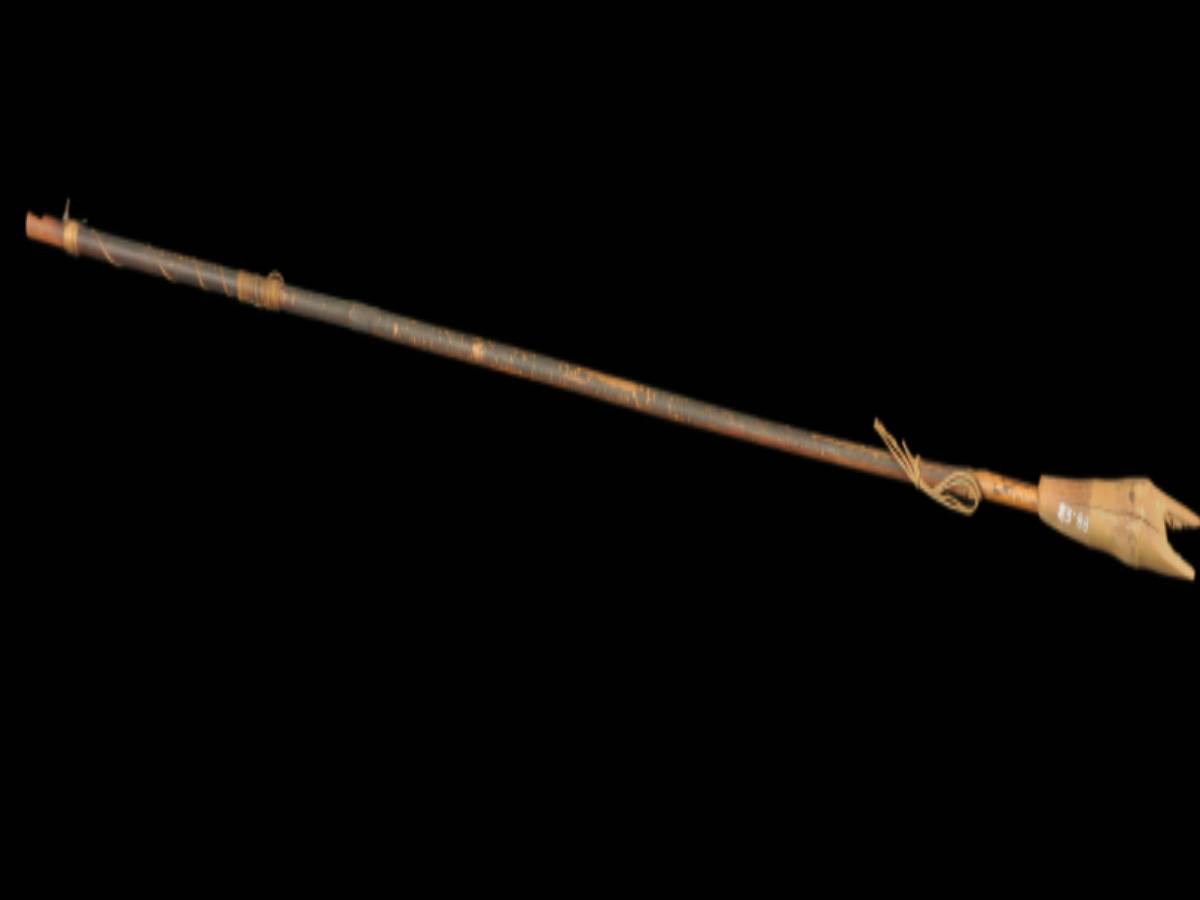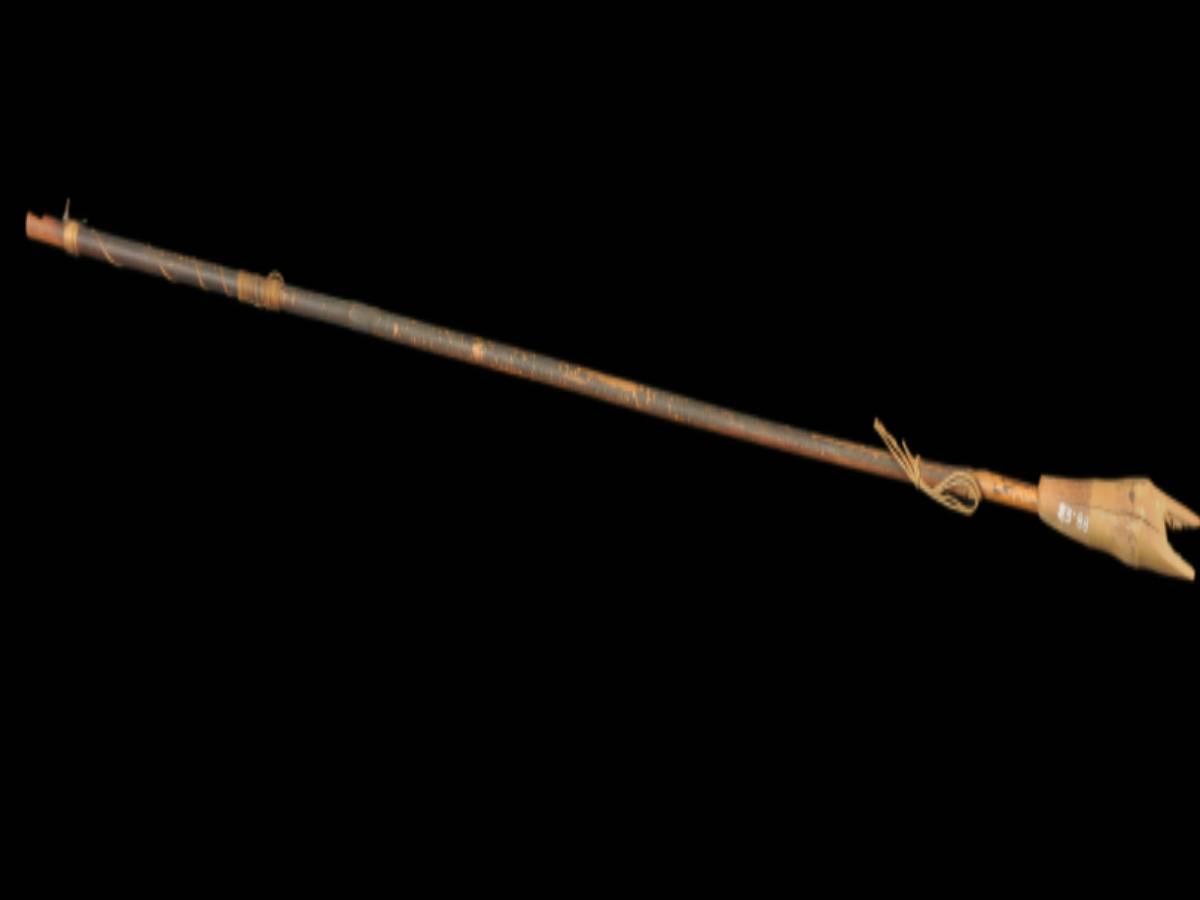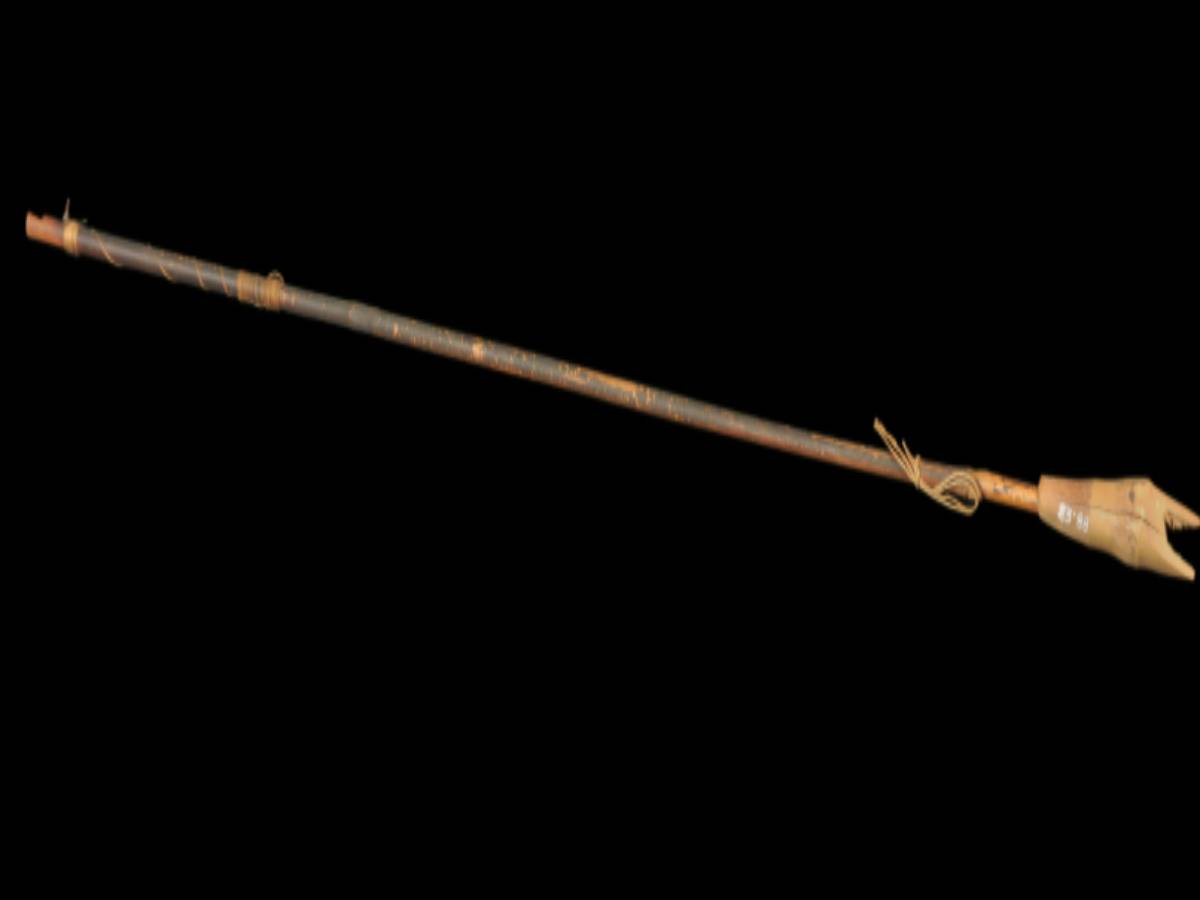State
Tribe Name
Art Type
short description
The Bani-Chil-Botak is a traditional projectile that is specifically used by the Rabha tribe. This tribe is famous for Bani-Chil-Botak and is an example of indigenous engineering and resource utilization as regards hunting or small-scale defensive use. Included in the bolt's assembly are two main parts, namely head and shaft. The head is ingeniously made from a bamboo node-the segment which naturally provides strength and structural integrity. What specifically makes the Bani-Chil-Botak stand out from other similar bolts is its bifurcated head design, which may or may not have been designed solely for increasing aerodynamic stability for the bolt or making it better at catching or creating a wound on an animal during hunting.
Thumbnail

Filter Postion
Left
Filter Background
Off
Theme
Filter Header Image

content
Image

description
The Bani-Chil-Botak is a traditional projectile that is specifically used by the Rabha tribe. This tribe is famous for Bani-Chil-Botak and is an example of indigenous engineering and resource utilization as regards hunting or small-scale defensive use. Included in the bolt's assembly are two main parts, namely head and shaft. The head is ingeniously made from a bamboo node-the segment which naturally provides strength and structural integrity. What specifically makes the Bani-Chil-Botak stand out from other similar bolts is its bifurcated head design, which may or may not have been designed solely for increasing aerodynamic stability for the bolt or making it better at catching or creating a wound on an animal during hunting.
The projectile's main body is the shaft, which forms the base portion of the bamboo head tightly inserted into it. It is entirely composed of bamboo, once again signifying the entire materials usage by the Rabha people as available in the locality. It is also wrapped meticulously in a cotton thread around its lower portion thereby securing the shaft and probably adding stability during flight. This wrapping also provides a better grip and guarantees durability with the frequent use. These days, while traditional hunting declined due to wildlife conservation efforts and modern regulations, the use of this artifact remains relevant. It counts as part of cultural heritage and also serves museum and tribal exhibition educational purposes for keeping alive the ancestral knowledge and craftsmanship belonging to the Rabha tribe.
The projectile's main body is the shaft, which forms the base portion of the bamboo head tightly inserted into it. It is entirely composed of bamboo, once again signifying the entire materials usage by the Rabha people as available in the locality. It is also wrapped meticulously in a cotton thread around its lower portion thereby securing the shaft and probably adding stability during flight. This wrapping also provides a better grip and guarantees durability with the frequent use. These days, while traditional hunting declined due to wildlife conservation efforts and modern regulations, the use of this artifact remains relevant. It counts as part of cultural heritage and also serves museum and tribal exhibition educational purposes for keeping alive the ancestral knowledge and craftsmanship belonging to the Rabha tribe.
Image Mode
landscape
promoted
Off
Verified
Off
